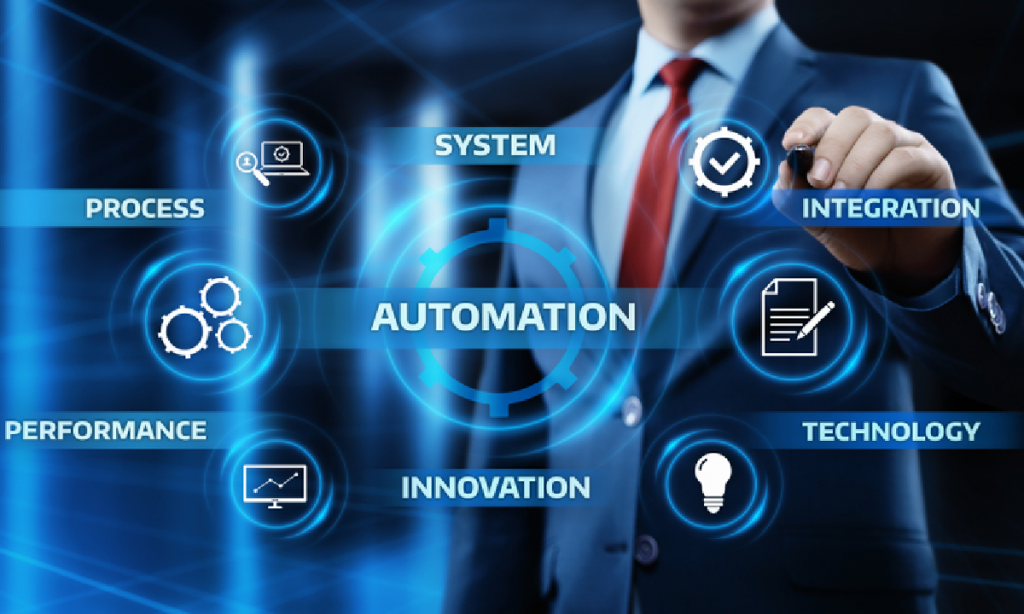Highlights:
- BPA uses software tools to automate routine tasks, such as data entry, file management, and document processing.
- BPA effectively allows businesses to optimize their operations and improve their bottom line while enhancing the customer experience and driving innovation.
Those who fail to adapt to changing times and benefit from the opportunities presented by technological advancements are destined to be left behind. Automation is one such significant part of this revolution. Automation and digitalization are closely associated as these two combined bring new tech possibilities for your business, better work management, and streamlined processes from start to end.
Moreover, the post-pandemic boom has significantly accelerated digital adoption as businesses are interested in newer strategies to overcome market uncertainties such as supply chain disruption and labor shortages. Today’s industry is fast-paced, and business process automation is one way to stay current with technology. Consequently, if you plan to invest time, money, or energy in such automation processes and software, you should know the critical business process automation trends.
Here are some statistics related to Business Process Automation (BPA) that you may find interesting:
- According to Imaginovation, the market for BPA is expanding. From 9.8 billion USD in 2020, it is anticipated to reach 19.6 billion USD in 2026.
- According to Grand View Research, the worldwide robotic process automation market was worth USD 2,322.9 million in 2022 and is anticipated to develop at a CAGR of 39.9% between 2023 and 2030.
- According to Forrester, BPA can lower operating expenses by 90% through automation.
- According to Deloitte, the typical payback period for firms that have already adopted RPA is between nine and twelve months.
Now that you know how important it is, let’s move on to business process automation and its trends that are shifting towards intelligent automation, further unlocking more comprehensive business benefits.
What is Business Process Automation (BPA)?
Business Process Automation (BPA) uses technology to automate and streamline repetitive or manual business processes. BPA can be applied to various processes across various industries and functions, such as finance, human resources, sales, customer service, and supply chain management.
BPA uses software tools to automate routine tasks, such as data entry, file management, and document processing. It can also include using artificial intelligence (AI) and machine learning (ML) to automate more complex processes, such as decision-making and problem-solving.
BPA effectively allows businesses to optimize their operations and improve their bottom line while enhancing the customer experience and driving innovation.
Future Trends Expected in Business Process Automation in 2023
The current era has witnessed a paradigm change, enabling businesses to utilize modern technology. Moreover, with the development of enterprise resource planning (ERP) tools, data-driven firms have begun automating complex and laborious operations.
In 2021, the global market for predictive maintenance was valued at USD 5.66 billion. According to Next Move Strategic Consulting, in 2030, it is anticipated to reach USD 64.25 billion.
Here is a list of promising business process automation trends offering long-term benefits in 2023.
Voice-activated automation
We are all familiar with voice-activated technology in the consumer sector, and now it is doing wonders for the efficiency of the business. Using voice instructions to execute a job streamlines corporate procedures.
Voice commands help you with the following:
- Conversationally interact with customers
- Schedule meetings, interviews, training, reviews, and other vital events
- Update your planner
- Record notes, meeting summaries, and videos in meeting rooms
- Unlock doors and other access points
- Automate many other manual tasks
Automating your company activities using voice technologies will result in cost savings and increased productivity.
No code integration
As no-code integration provides enterprises with a barrier-free experience, they can embrace it more broadly. Moreover, it enables organizations to construct, edit, and employ data-driven applications. Using no code lets you develop your solution without coding or programming.
By 2024, according to Gartner, low-code platforms will account for 65% of all app development functions. Businesses can streamline workflows, improve data accuracy, and reduce manual data entry tasks using no-code integration tools. This can increase efficiency, improve productivity, and better overall performance.
Integrating RPA (Robotic Process Automation) with BPA
Using robots in the workplace liberates employees from laborious, time-consuming manual labor. RPA has lately gained popularity following the pandemic. RPA bots helped businesses to efficiently manage remote office operations by minimizing manual and repetitive duties, resulting in a more significant ROI.
Companies facilitate remote work culture by integrating BPA and RPA bots and simulating human interactions. Remote work culture has become the new standard; thus, businesses integrate BPA and RPA bots and simulate human interactions.
Benefits of Business Process Automation
There are several benefits of implementing BPA in an organization, including:
- Better efficiency: Automation cuts down the time and effort required to complete tasks, which helps employees focus on more critical tasks that require human decision-making and creativity.
- Increased accuracy: Automated processes keep less space for errors and mistakes than manual processes, hence improving the accuracy and reliability of data and outputs.
- Reduced costs: With the help of automating repetitive tasks, businesses require less manual labor, leading to significant cost savings in labor expenses.
- Enhanced scalability: Automation enables businesses to scale their operations more efficiently, as they can quickly and easily replicate automated processes to handle increased volumes of work.
- Better customer service: Businesses can provide faster and more consistent customer service by automating specific customer service.
- Increased agility: BPA can help businesses adapt more quickly to changes in the marketplace or regulatory environment, as they can quickly modify automated processes to address new requirements.
BPA can help businesses improve their productivity, efficiency, and competitiveness while reducing costs and improving customer satisfaction. BPA can also free employees from repetitive and time-consuming tasks, allowing them to focus on higher-value activities requiring human skills and expertise.
Wrap Up
Adopting the latest process automation trends in today’s rapidly changing business landscape can give your organization a significant competitive advantage.
To revolutionize your processes with top business process automation trends:
- Start by identifying the areas of your business that are ripe for automation. Research the latest automation technologies and business process automation tools to find the best suited for your needs.
- Work with a trusted automation partner to implement these business process automation tools and ensure a smooth transition to your new automated processes.
Automation is not a one-time fix; it requires ongoing monitoring and optimization to ensure continued success. By staying current with the latest trends and best practices in process automation, you can continue to drive efficiency and innovation within your organization for years to come.













